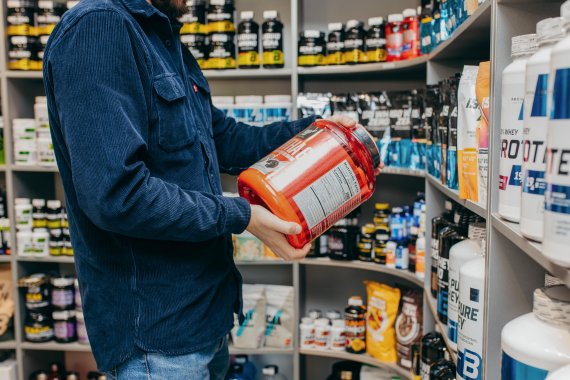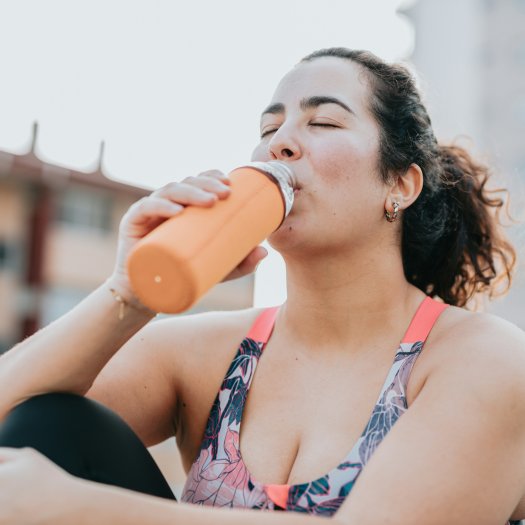Valued at USD 45.24 billion in 2023, the global sports nutrition market is expected to grow at a compound annual growth rate (CAGR) of 7.5% from 2024 to 2030. To grab a piece of this lucrative pie, Sports businesses are leaning towards using social media as an extension of their marketing strategies.
Sports and fitness are inherently social activities, whether it’s team sports, gym workouts, or Pilates. This social nature implies that there is always a possibility to influence, encourage, and build a community of consumers; all aspects that are built into characteristics of social media (SM).
Besides, sports fans and fitness enthusiasts are turning to social media channels to stay connected with their favourite sports celeb or fitness instructor. By congregating their target audience in one place, social media gives instant access to a potential pool of consumers.
Statistically, according to a survey by the Council for Responsible Nutrition (CRN), sports nutrition is the second most popular category of supplements consumed by people. And 18-34 years is the age group that constitutes 41% of the target audience for supplements. This is the same age group that spends a significant amount of time on social media sites.
They are the ones to be influenced first, to step ‘outdoor’ following the insta-worthy lifestyle of their admired celebrities.
The advantages of using Social Media Marketing to promote sports nutrition brand should be a no-brainer by now:

With social media acquiring the role of an information disseminator, athletes and non-athletes alike are turning to it for nutrition and lifestyle advice, or at least for motivation. Therefore, your brand’s presence on the platform is crucial to build awareness.
Compared to traditional methods, social media allows you a direct line of communication with your audience. It thus becomes the quickest way to promote your brand among people.
This can be done through strategic content that drives engagement with your audience, including:
- Influencer Marketing
- Collabs
- Campaigns
- Giveaways
- Paid Advertising
A noteworthy example here is Bodybuilding.com which is one of the most visited websites in the world. The brand uses social media to host giveaways of its products and pass on healthy recipes for fitness enthusiasts (educational content). Both of these strategies have helped tremendously in building its presence among consumers.
Social media gives you the power to communicate directly with your target audience and streamline the marketing effort. The marketing tools available on SM help in disseminating brand information to the desired audience more effectively, thereby generating a better ROI. SM tools can be leveraged to reach those who are likely to use your products and achieve a better conversion rate. You can also design your campaigns to be large or small scale depending on the desired reach. Case in point are USN’s campaigns like #FLEXFRIDAY #CHALLENGEYOURSELF that helped in reaching the right audience and building a community around their offerings.
When you directly interact with your consumers, the relationship transcends a transactional nature to evolve into an emotional connection. As psychologists will tell you, this connection is what drives consumer behavior and turns them into loyal supporters of a brand.
The world of fitness and sports is such that it requires personalization to some degree. This can be achieved from the insights that brands collect through social media. These insights can help you understand and shape the consumer’s purchase behavior.
Quest Nutrition has successfully used Social Media Marketing to build audience engagement through the Quest Squad. This is an online community of like-minded individuals who post Quest Missions on their social media in exchange for exclusive experiences and products. Thus, forming a profitable two-way channel between the brand and its consumers.
Influencers are a source of information, motivation, and innovation to their followers. And this link is what brands can leverage to their advantage.
Influencer marketing is particularly impactful in the fashion and fitness industries where people seek constant inspiration. They trust the fitness coaches, athletes, and sports persons, who have built a following by sharing their personal transformations and training tips.
The challenge lies in choosing the right influencer for your brand and creating authentic content. And Optimum Nutrition nailed this strategy. They invested in a long-term Ambassador Program where they chose relevant influencers who aligned with the brand's values. This was a huge success and established the brands in new markets across Singapore, the Philippines, Indonesia, Malaysia and Thailand.
Every campaign is designed to achieve certain objectives as outlined by the Key Performance Indicators (KPIs). Social media simplifies the task of assessing these through the use of analytical tools provided by every platform.
These insights offer metrics like post engagement, reach, new followers, unfollows, mentions, etc. which can reveal crucial information and offer deep insights. This helps in understanding the prevalent mood and tailoring campaigns for optimized performance.
The sports nutrition brand, Nutrabolt has backed its aggressive Social Media Marketing campaigns with a robust assessment system. Besides revenue, it continually evaluates engagement rate, reach, customer sentiment, comments, DMs, etc., to stay relevant. This has helped the brand stay ahead of the competition, design highly effective campaigns, and focus on generating an emotional connection.
Social media has emerged as the dominant channel for brands to communicate with their consumers. It is especially beneficial for start-ups and niche companies like sports nutrition brands that are keen to expand reach and brand awareness.
A carefully planned Social Media Marketing strategy is imperative to harness the limitless potential that social media offers. Creating compelling content, leveraging partnerships and influencer marketing, analyzing performance, and engaging with the audience are powerful tools that can propel your brand’s reach.
An omnichannel approach is needed to stay ahead in the competitive sports nutrition market. And in the current scenario, social media is the definitive tool you need in your marketing arsenal. As Erik Qualman, American Author of Socialnomics, says, "We don’t have a choice on whether we do social media; the question is, how well we do it."

 Sports BusinessAI in online retail: 8 opportunities for sports retail
Sports BusinessAI in online retail: 8 opportunities for sports retail
- Awards
- Mountain sports
- Bike
- Fitness
- Health
- ISPO Munich
- Running
- Brands
- Sustainability
- Olympia
- OutDoor
- Promotion
- Sports Business
- Textrends
- Triathlon
- Water sports
- Winter sports
- eSports
- SportsTech
- OutDoor by ISPO
- Heroes
- Transformation
- Sport Fashion
- Urban Culture
- Challenges of a CEO
- Trade fairs
- Sports
- Find the Balance
- Product reviews
- Newsletter Exclusive Area
- Magazine





